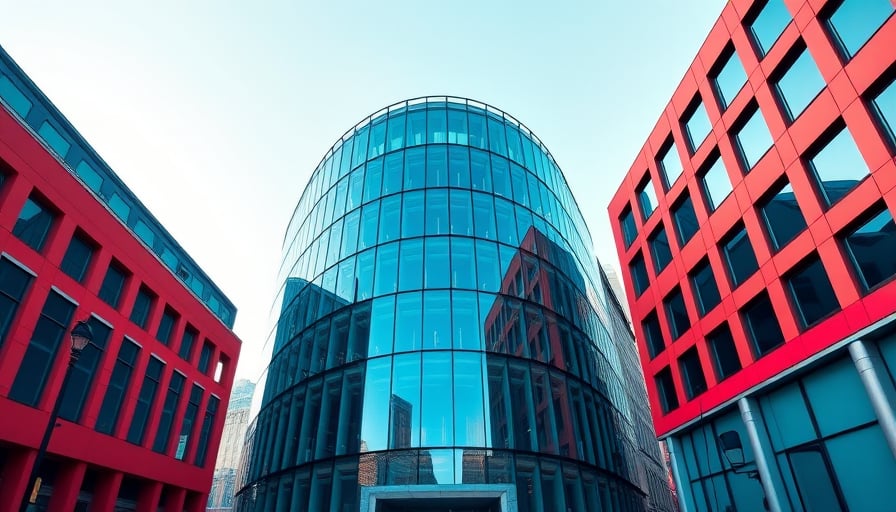Schindler Holding AG Sees Modest Share Price Upswing Following Earnings Report
Schindler Holding AG, the Swiss‑based elevator and escalator manufacturer listed on the SIX Swiss Exchange, experienced a modest rise in its share price the day after the release of its latest quarterly earnings. The uptick, while not dramatic, signals a degree of confidence among market participants in the company’s operational trajectory and its strategic focus on commercial and transport infrastructure projects.
Financial Performance Overview
The earnings report highlighted continued profitability, with earnings per share (EPS) slightly above analyst consensus. Revenue growth remained steady, driven primarily by the commercial sector, where Schindler has deepened its penetration in office towers and retail developments. The transport infrastructure division, encompassing airport and transit‑system installations, also posted gains, reinforcing the company’s diversified project base.
Service‑based revenue, which accounts for roughly one‑third of the company’s total turnover, sustained its contribution, underscoring Schindler’s emphasis on long‑term maintenance contracts. This revenue stream provides a cushion against cyclical downturns in new construction activity and aligns with industry trends toward subscription‑style service models.
Market Reaction and Investor Sentiment
The share price increased by roughly 0.8 % on the trading day following the earnings announcement. While the movement is modest, it reflects a broader positive sentiment within the industrial sector. Analysts note that the lift can be attributed to a combination of factors:
- Positive earnings surprise: EPS surpassed expectations, indicating robust cost control and margin expansion.
- Strategic focus on high‑growth segments: The company’s commitment to commercial and transport infrastructure projects aligns with macro‑economic forecasts for urban development and public transport upgrades.
- Service revenue stability: The recurring nature of service contracts mitigates volatility and provides predictable cash flow.
Despite the upbeat performance, investors remain cautious. The elevator and escalator industry is highly sensitive to global construction cycles, and a slowdown in commercial real estate could pressure future revenue growth. Additionally, currency fluctuations—particularly the strength of the Swiss franc relative to key markets—may erode profit margins.
Regulatory Landscape and Competitive Dynamics
Schindler operates in a heavily regulated environment, where safety standards and energy‑efficiency mandates vary across jurisdictions. In the European Union, the EU Directive on the Safety of Lift and Escalator Systems imposes stringent compliance requirements that necessitate continuous investment in technology upgrades. While compliance costs can strain margins, they also create barriers to entry, protecting Schindler’s market position.
In North America, the U.S. Consumer Product Safety Commission and state‑level agencies enforce similar regulations. The company’s ability to navigate these regulatory frameworks has been a cornerstone of its reputation for safety and reliability.
Competition remains intense, with key players such as Otis, ThyssenKrupp, and KONE vying for the same contracts. Schindler’s differentiation strategy rests on a strong service network, a robust supply chain, and a focus on innovative solutions such as smart‑building integration and energy‑efficient elevator technologies. However, emerging players in the autonomous vehicle and robotics sectors could disrupt traditional lift and escalator markets by introducing new mobility concepts that integrate vertical transport into multimodal systems.
Overlooked Trends and Emerging Opportunities
Digital Twin and Predictive Maintenance: The industry is moving toward digital twin technologies that enable real‑time monitoring of elevator components. Schindler’s investment in predictive maintenance platforms could reduce downtime and attract high‑net‑worth clients seeking data‑driven service contracts.
Sustainability Credentials: Growing demand for carbon‑neutral buildings is driving the adoption of elevators with regenerative braking systems and energy‑efficient drives. Schindler’s early investment in green technologies could position it as a preferred supplier for LEED‑certified projects.
Modular and Prefabricated Systems: Prefabrication trends in construction may reduce on‑site installation times. By offering modular elevator cabins and components, Schindler could lower installation costs and appeal to developers seeking rapid project delivery.
Global Expansion into Emerging Markets: Infrastructure investment in Asia‑Pacific and Latin America remains strong. However, local regulatory frameworks and competitive dynamics differ markedly, presenting both risks and high‑growth potential.
Potential Risks
- Construction Cycle Volatility: A slowdown in the commercial real estate market could dampen new project pipelines.
- Supply Chain Disruptions: Geopolitical tensions and raw material price volatility may affect component availability and cost.
- Technological Disruption: Rapid advancements in autonomous mobility solutions could erode the traditional elevator market share if Schindler fails to adapt quickly.
- Currency Exposure: The company’s revenue is concentrated in several currency zones; exchange rate swings can materially impact reported earnings.
Conclusion
Schindler Holding AG’s modest share price increase post‑earnings underscores market confidence in its strategic focus on commercial and transport infrastructure projects, alongside a resilient service revenue base. While the company’s regulatory compliance and competitive positioning provide a solid foundation, investors should remain vigilant of cyclical construction risks, emerging disruptive technologies, and macroeconomic headwinds that could shape the company’s trajectory in the coming years.




